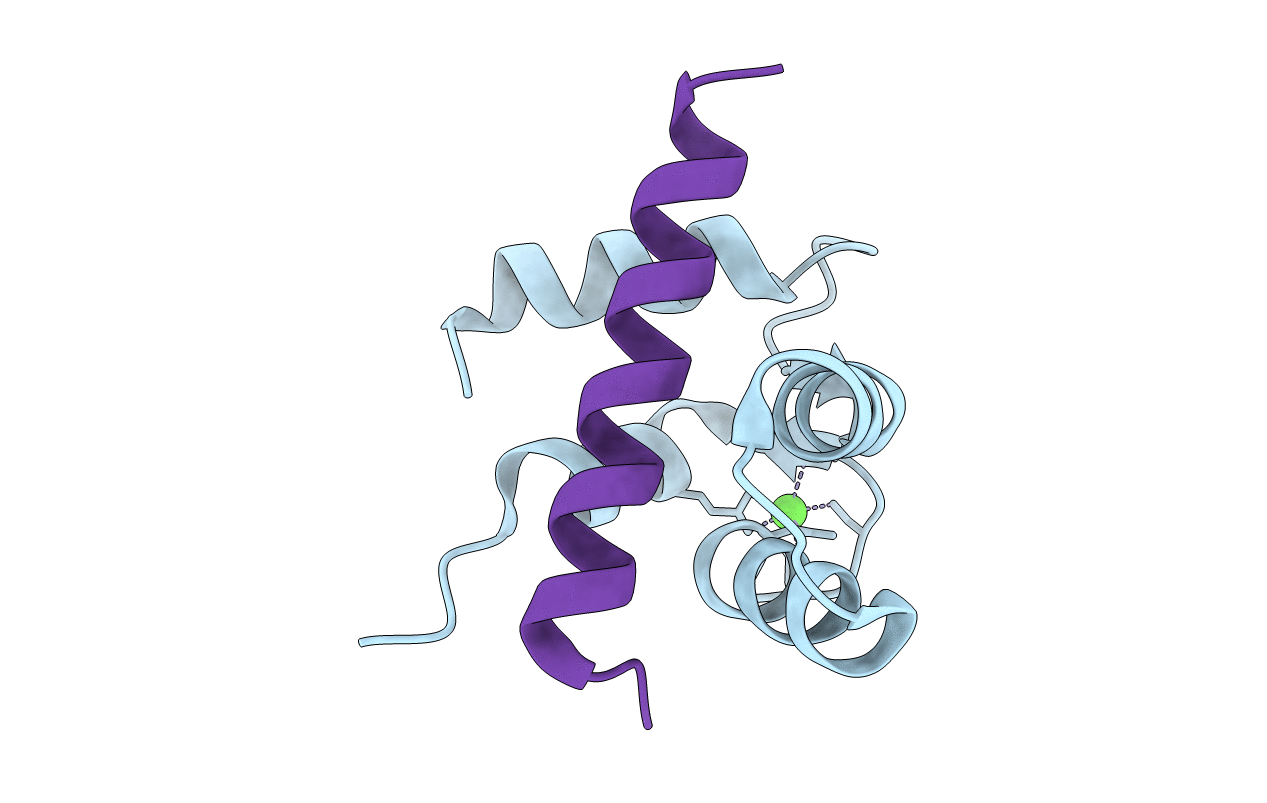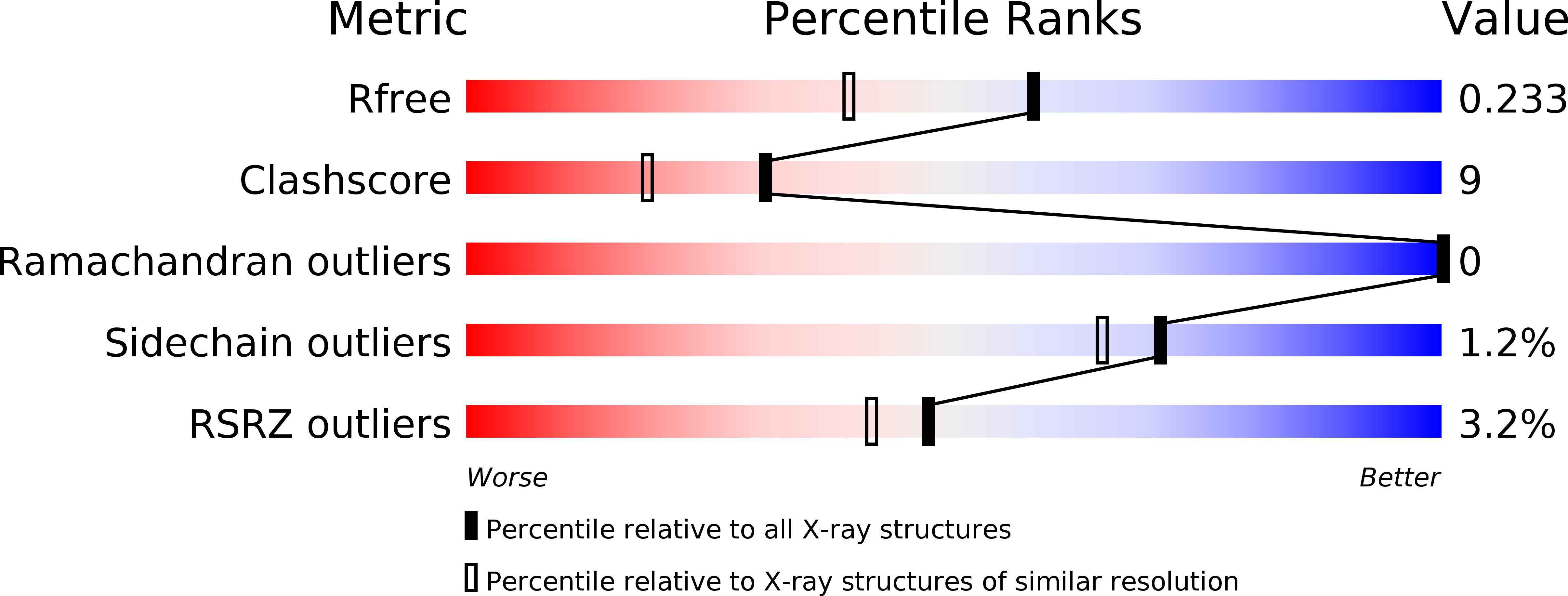
Deposition Date
2011-09-26
Release Date
2013-01-23
Last Version Date
2024-03-20
Entry Detail
PDB ID:
3TZ1
Keywords:
Title:
Crystal structure of the Ca2+-saturated C-terminal domain of Akazara scallop troponin C in complex with a troponin I fragment
Biological Source:
Source Organism:
Chlamys nipponensis akazara (Taxon ID: 6571)
Host Organism:
Method Details:
Experimental Method:
Resolution:
1.80 Å
R-Value Free:
0.23
R-Value Work:
0.20
R-Value Observed:
0.20
Space Group:
P 21 21 21


